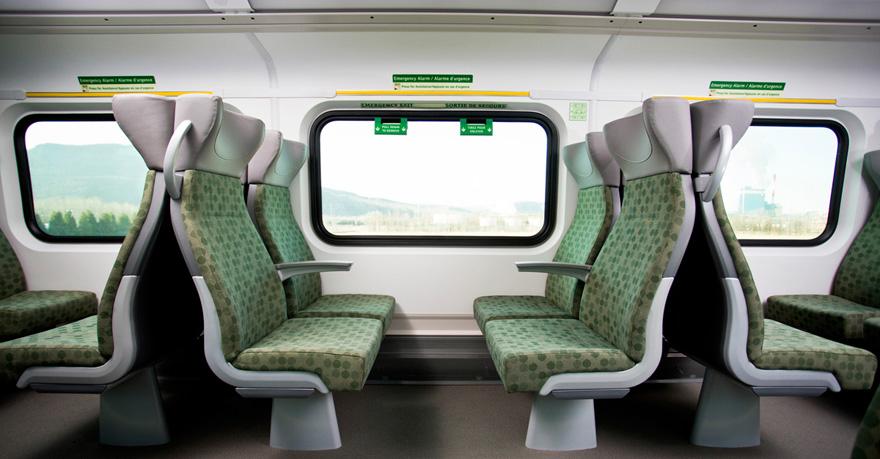^ I had to do a fair amount of digging, as you can imagine, to get pics to compare and track down the claims by Metrolinx, and your points might be open to quibbling, but all you write has been said by many others on the subject, mostly riders themselves.
What astounds me is the "Emperor's Clothes' attitude people have on this. It's proof that advertising and 'conditioning' (a nice word for brainwashing) works. Goebbels lives! (Tell them a small lie, and they won't believe you, but tell them a big one and...)
I've yet to take a tape-measure onto GO to confirm what appears to be clearly evident from the window dimensions in the pics showing how the seats are actually closer together. Seat pitch is exactly same, old to new, for the quads...unless they've stretched the windows in the rinse...It's the window pillars that demark the quad seating pitch.
I have more observations I've made on this, but will leave them until later. And I'm definitely going to ask women how they deal with the 'heating hump'. I'm sure I know what the answers will be....lol...save for the odd 'womanspreader' in the vertical dimension. In the general population, we're outnumbered (approx) 51:49. In the GO train at peak? Probably even more. And yet dealing with thoughtless intrusion 'is their problem'. It's OUR problem.
And other nations have addressed this a lot better.
or putting the larger seats on one side and the smaller on the the other............
Quick reply to this, all your points deserve discussion, but as a microcosm comment on society in general, the more I look at how seat room is trying to be 'defined' (as you suggest for big and small) the Fifties, of all eras and the decades prior had it right! Bench seats, plush, resilient, natural fibres, and you took the space you needed, no more, no less.
Instead we have the trend to isolated zombies who can't read timetables and want it all. "Where's the Wi-Fi?", It can't all be catered to, albeit the Emperor's Clothes exude a kind of Soma for them. Just don't ask them to look you in the eye as you sit next to them. Ditto for buses! The height of absurdity is the row of seats right at the very back of the bus/streetcar. Logic cries out for bench seat! And instead, it's all divided up for you in predigested plastic pallets that fit none, irritate all. All in the name of 'my space'.
Interesting discussion further to this here:
What might be the pros and cons of installing bench-style seating in buses, like there are in subway systems? I realise this might not be the appropriate site for this question. If so, please redi...

travel.stackexchange.com






